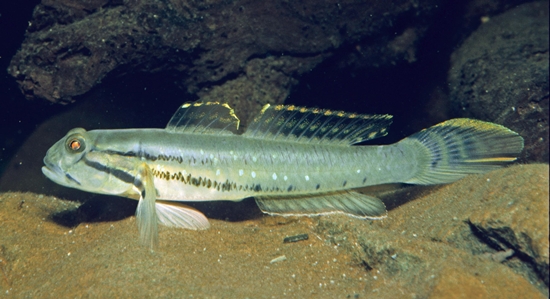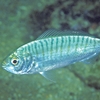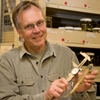General Description
Head slightly compressed; snout short, blunt; mouth oblique, terminal, reaching to below middle of eye; eyes large, close together on top of head; gill opening restricted to pectoral-fin base; pectoral fins with terminal filaments; males with a long pointed tail. Overall greyish to pale olive-brown with iridescent pale blue spots along sides; two oblique dark bands originating on head below eye, upper breaking up into diffuse purplish-brown spots running from pectoral-fin base to lower sides above anal fin. To 18 cm.
Biology
This is one of the larger and more colourful gobies in southern waters.
Habitat
Builds burrows in muddy and silty areas in shallow estuaries and mudflats near seagrass beds in bays, harbours and coastal lagoons.
Soft substrates
Seagrass meadows
Distribution guide
New Zealand and southern Australia.
Species Group
Depth
Water Column
Max Size
18 cm
Commercial Species
No
Global Dispersal
Introduced to Australia
Identify
Conservation Status
- DSE Advisory List : Not listed
- EPBC Act 1999 : Not listed
- IUCN Red List : Not listed





